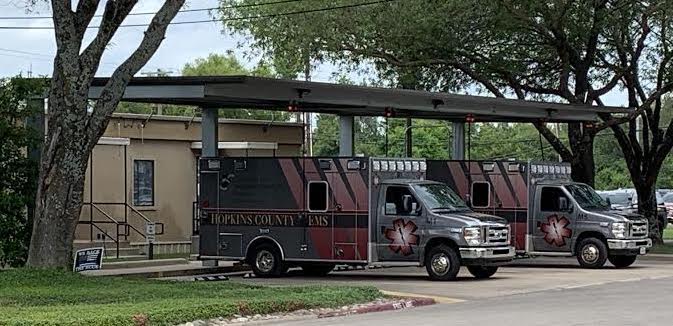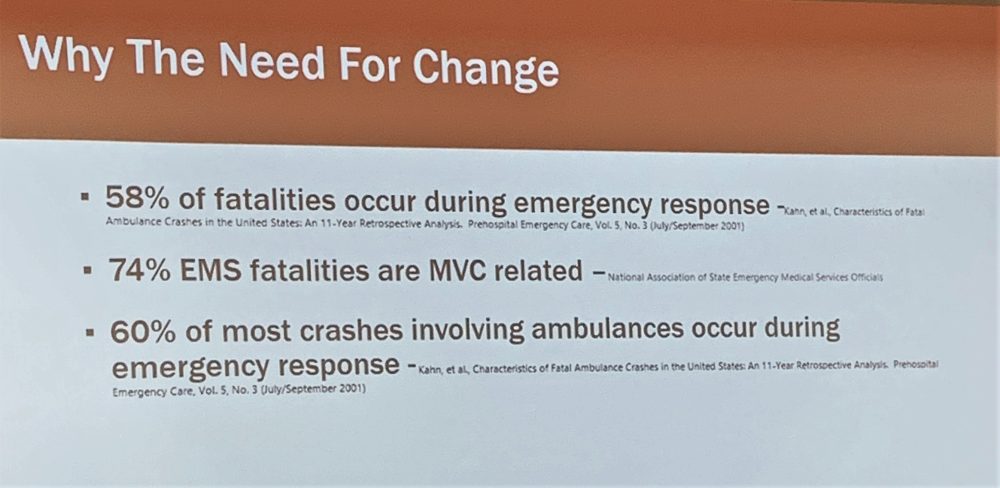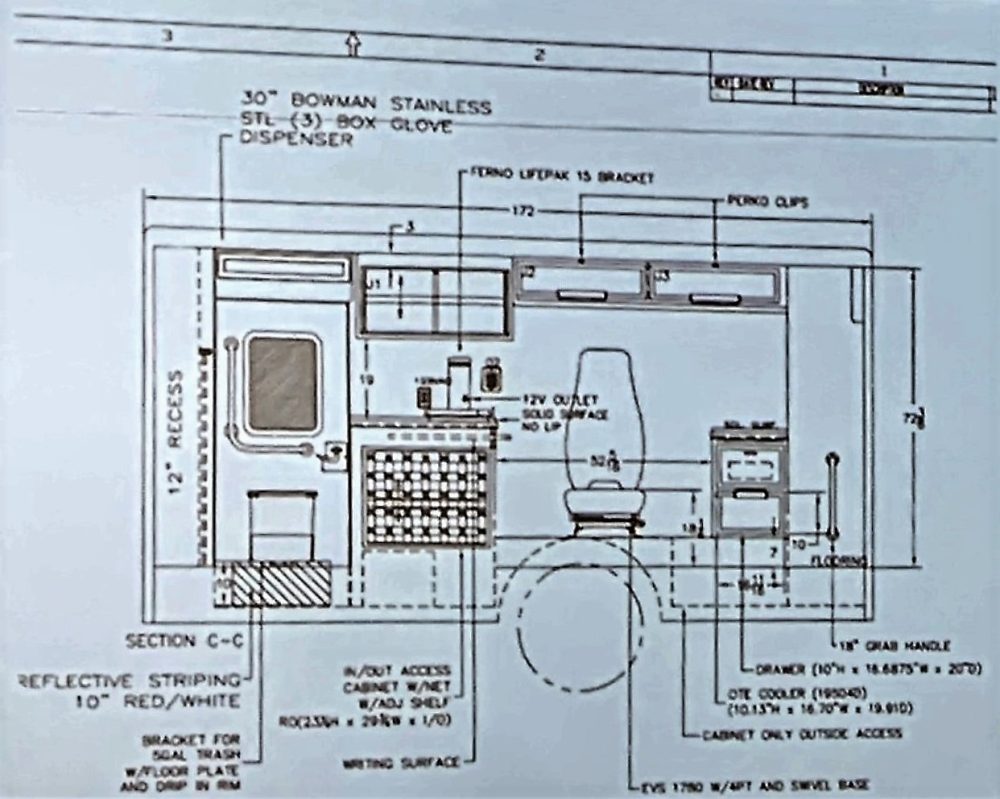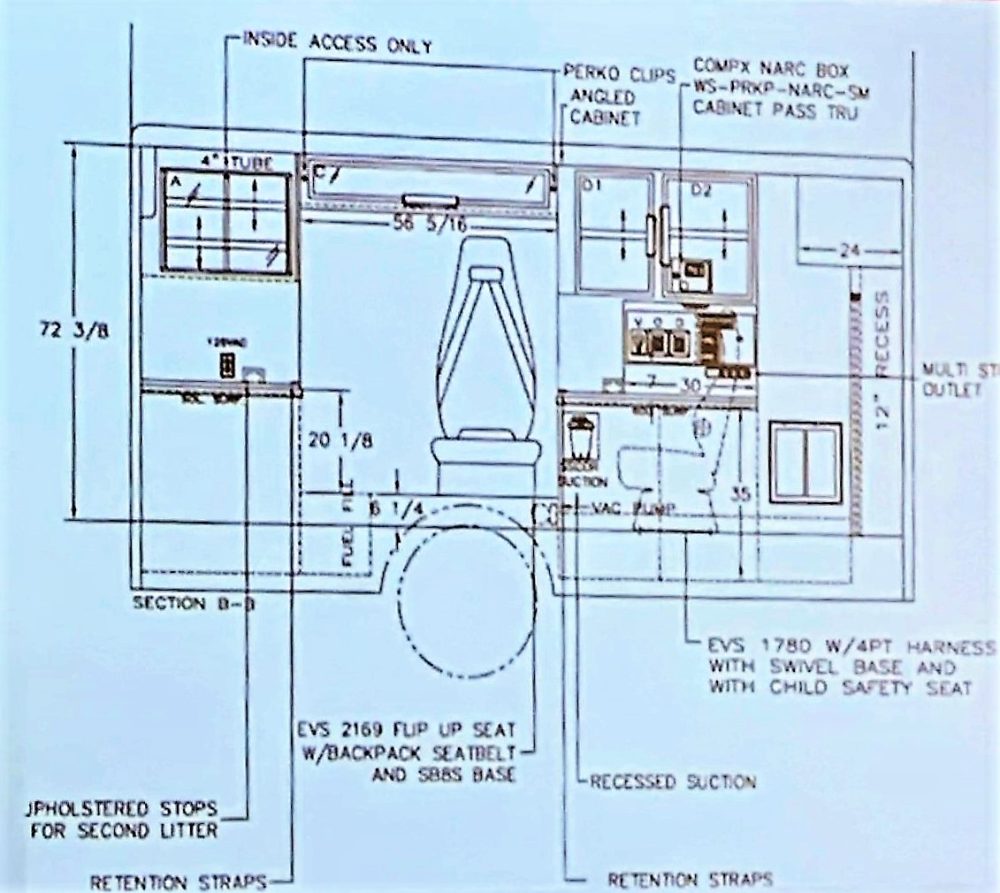A new, different type of ambulance was considered by Hopkins County Hospital District Board of Directors Tuesday night.
Typically, EMS submits for HCHD Board approval in the budget process a truck remount. Monday evening, the board was asked to consider purchasing a new truck at a higher rate but with many additional safety features and more in line with current industry standards, at the recommendation of the department’s apparatus committee.

Heather Smith explained how the committee came by that decision. The Hopkins County EMS Apparatus Committee was formed in May of 2021 to look at best practices in ambulance safety due to the increasing number of first responder and ambulance collisions being reported across the state and country. The group started with 9 members, most of the department’s leadership, two EMTs and the rest were paramedics to research and study different ambulance manufacturers and inspect some on site.
Two 11-year industry studies one published in the summer of 2021 and the other 10 years before, showed that 58% of fatalities in ambulances occurred during emergency response and 60% of most crashes involving ambulances occurred during EMs response. Another study said 74% of EMS fatalities are motor vehicle crash-related.
Medic 2 in 2019 was struck while traveling with lights and sirens on transporting a “code stroke” patient to CHRISTUS Mother Frances Hospital Sulphur Springs. The medic in the back with the patient had just moved to the CPR seat to check the patient’s blood pressure before arrival at the hospital when Medic 2 was hit on the back curbside door, causing it to land on its side, sliding before stopping. An airbag placed on the floor without a designated housing location at the time was thrown about within the back of the ambulance. The EMS employee sustained only a bruised knee from the stretch slamming into the medic’s knee upon impact with the other vehicle.
Smith noted that if everything in the back of the ambulance had been within arm’s reach of the EMS staff, he would never have had to leave his seat. A more secure console in the front of the compartment should hold items in place.

Accidents, the board was told, do happen and are more likely to happen the more calls the department makes. Lights and sirens do not mean people pay attention and stop to give the ambulance the right of way. They were shown another scenario in which an ambulance on the way to Tyler was almost struck head-on by a vehicle driving in the wrong lane on State Highway 154. Luckily, the driver reacted quickly and was able to move onto the ditch to avoid the collision as did the family member of the patient in the ambulance at the time.
The Apparatus Committee was tasked with evaluating current apparatus and decide what would be the best apparatus for Hopkins County EMS moving forward based on safety and functionality, comfort and placement design, and chassis and stretchers.
The committee members were given the opportunity to attend the largest Texas EMS conference and tradeshow offered to view more apparatuses from all over the nation.
After numerous meetings to evaluate current units compared to what can be done better to maintain safety in all aspects of driving and riding in the MICU, the committee recommended staying with a Type III unit, rearranging the entire module to make it more accessible for the attendant in the back with the patient, continue using the Stryker cots HCEMS already had and to add more safety features to each unit.
In February, HCEMS sent out requests for proposals to 10 different ambulance manufacturers, but only 2 responded. Siddons-Martin were unable to place a bid because they don’t know when chassis will be available so they aren’t taking on any new customers, Heather Smith and HCEMS Director/HCHD CEO Brent Smith reported.

Excellance & SERVS (AEV) came in with a low bid with everything HCEMS asked for. In April, the local EMS official met with a representative to work out details and some modifications so the truck would be CAAS certified (the current standard), while ensuring the safety of the crew and patients would be upheld.
A new ambulance with all of the items sought is priced at $284,000, whereas a remount has typically been $165,000, which with a purchase order would guaranty the price for the unit and put it in the que to be built. Due to supply chain, chips and related issues, the truck isn’t expected to go into production until November 2023, although that could be later before it’s ready due to current delays in chassis being produced for first responder vehicles.
Hopkins County EMS would then test and study the ambulance’s performance for 6 months or so, to see if that will be the department’s recommendation of a new ambulance on regular schedule to replace aging equipment that’s been around since 1999. In addition to a designated place for everything, including a waste disposal, lights which would improve scene safety and allow medics to see around and under a truck once on scene, a 360 degree camera in the back installed not to record what is occurring but so that the driver in the front can monitor the situation occurring with the patient and coworker in the back, interior brake and blinker lights, liquid springs which would help counterbalance to keep the ambulance from rolling over should it become involved in a crash or other perilous situation.

The industry has changed dramatically in the last 20-25 years in terms of design and safety features for apparatus. When consulting, EMS Committee was told the cost would be a lot cheaper to start fresh with a new ambulance than to try to reconfigure the units they currently have to make them safer. However, the plan would be to study the one ambulance, see if it meets best practices and safety needs of patients and EMS personnel or if a redesign would, while continuing to monitor to see if something else comes along between now and that time that’d be in something considered between the old and new apparatuses.
If the new ambulance is deemed a good fit, HCEMS then will likely ask that the rest of the department apparatus be replaced one at a time over a 9 year period with new models with the safety features instead of asking annually that funding be allocated for unit remounts. If not, another recommendation will be made based on best practices, safety and comfort and utility and accessibility. The industry appears to be going toward the CAAS systems, Smith said.
HCEMS/HCHD would be given trade-in value of the old ambulances if they trade them in to apply toward purchase of a new unit.
HCHD Board member David Black made the motion which board member Eimy Medina seconded to approve the purchase of a new model ambulance as recommended by the Apparatus Committee. The motion received full approval of the board.






